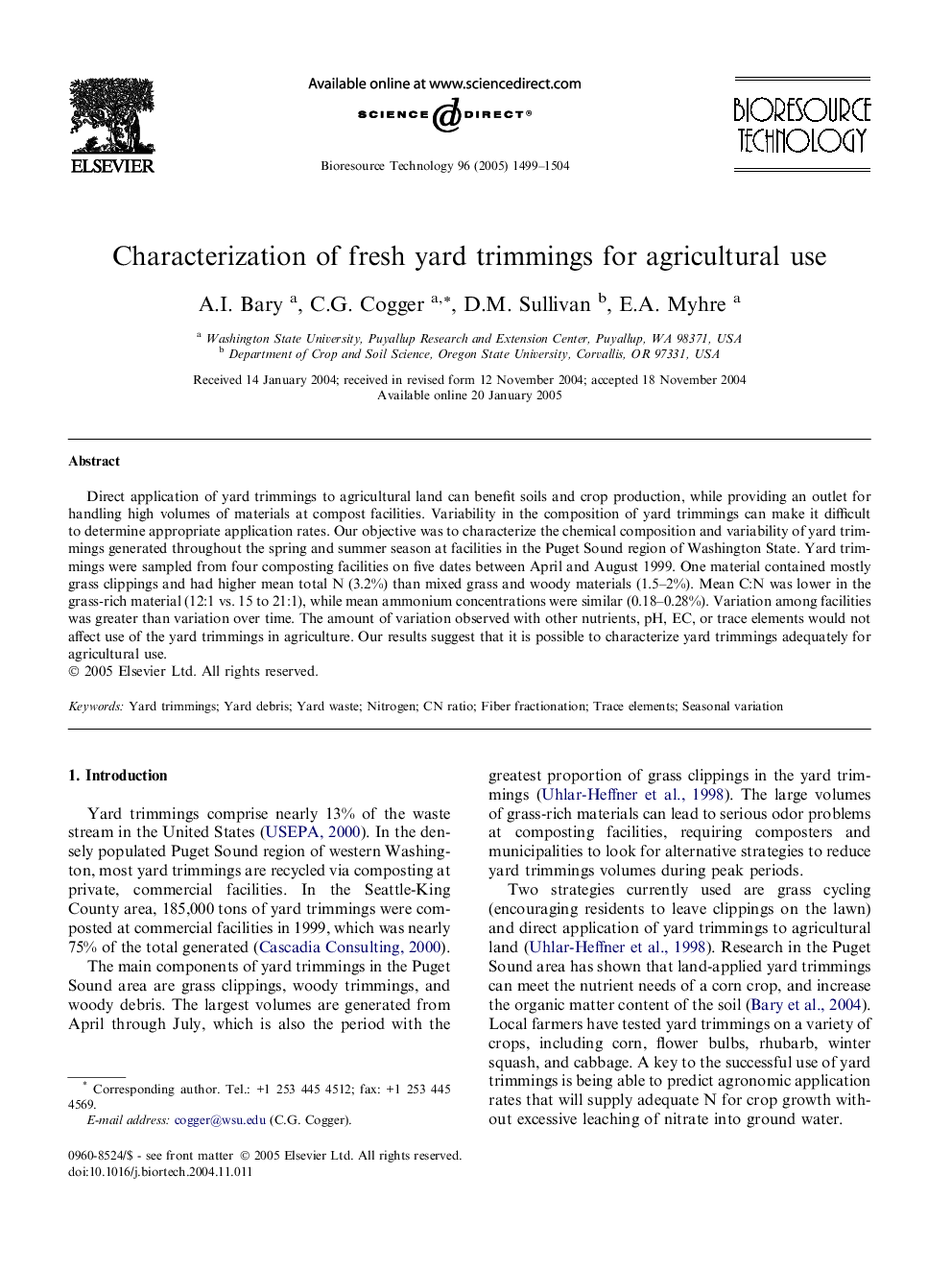| Article ID | Journal | Published Year | Pages | File Type |
|---|---|---|---|---|
| 10396027 | Bioresource Technology | 2005 | 6 Pages |
Abstract
Direct application of yard trimmings to agricultural land can benefit soils and crop production, while providing an outlet for handling high volumes of materials at compost facilities. Variability in the composition of yard trimmings can make it difficult to determine appropriate application rates. Our objective was to characterize the chemical composition and variability of yard trimmings generated throughout the spring and summer season at facilities in the Puget Sound region of Washington State. Yard trimmings were sampled from four composting facilities on five dates between April and August 1999. One material contained mostly grass clippings and had higher mean total N (3.2%) than mixed grass and woody materials (1.5-2%). Mean C:N was lower in the grass-rich material (12:1 vs. 15 to 21:1), while mean ammonium concentrations were similar (0.18-0.28%). Variation among facilities was greater than variation over time. The amount of variation observed with other nutrients, pH, EC, or trace elements would not affect use of the yard trimmings in agriculture. Our results suggest that it is possible to characterize yard trimmings adequately for agricultural use.
Related Topics
Physical Sciences and Engineering
Chemical Engineering
Process Chemistry and Technology
Authors
A.I. Bary, C.G. Cogger, D.M. Sullivan, E.A. Myhre,
